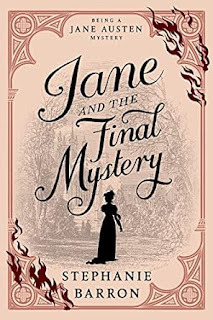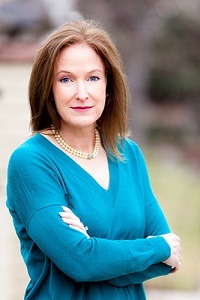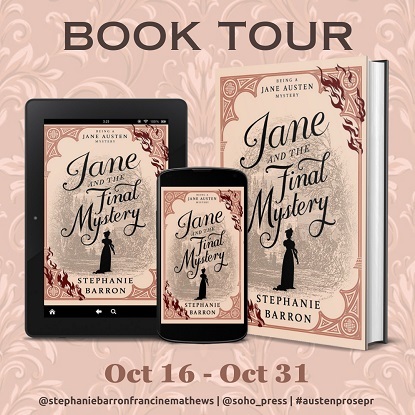An ailing Jane Austen takes one last case in Stephanie Barron's Jane and the Final Mystery
 Historical mysteries in which famous people transform into amateur detectives can be minefields for their authors. If the protagonist’s personality drifts from the recorded reality, readers will get cranky, since the illusion that fiction provides will be broken.
Historical mysteries in which famous people transform into amateur detectives can be minefields for their authors. If the protagonist’s personality drifts from the recorded reality, readers will get cranky, since the illusion that fiction provides will be broken. The background details should be faithfully re-created and, for literary sleuths, their narration and dialogue should plausibly reflect their actual writings. Bonus points if the invented mystery scenarios feel neatly enfolded into settings or situations the starring character would have – or could have – personally encountered.
The successful execution of all these precepts has made Stephanie Barron’s Jane Austen Mysteries such a winning series, of which we’ve now arrived – alas! – at the fifteenth and last volume. The historic Austen didn’t really solve mysteries, but with the workings of her ever-agile mind on each case, Barron has us willingly accepting the fictional premise that she could have.
Once past the scene-setting prologue, we’re at Jane’s home of Chawton Cottage, Hampshire, in late March 1817 – and anyone aware of her historical biography will know the sad truth that the esteemed author hasn’t much time left. Still, as she says, “I refuse to spend my final months in a fog of benign stupidity,” refusing to take laudanum so her mind will remain sharp.
 author Stephanie Barron
author Stephanie BarronWhen Jane’s favorite nephew, Edward, receives an alarming letter from his friend William Heathcote, son of her friend Elizabeth, Jane willingly boards a pony trap to Winchester with Edward to see how she can help. A fifteen-year-old boarding school pupil who’s been bullied for his stutter, William is seemingly being framed for the drowning of a fellow student at Winchester College, one with a reputation for cruelty. William’s baffling refusal to supply an alibi for the time of death hinders his family’s and friends’ pursuit of justice.
Investigating the mystery gets Jane and her readers immersed in the dangerous rivalries and arcane rituals and in-jokes of a British boys’ boarding school, as well as some courtroom drama – complicated by the fact most potential witnesses are on holiday and absent. In this environment and Jane’s wider social world, social class and money underlie many relationships, realistically reflecting the time and place (and the environs of Austen’s own novels).
In the background, with the recent passing of Jane’s uncle, James Leigh-Perrot, she and her widowed mother await news of a potential inheritance. Jane’s concerns for her family’s financial future, as she reflects on her own ill health, lend even more emotion to this final volume of her fictional adventures, which is well worth reading – regardless of whether you’re a longtime fan or a newcomer to the series.
Jane and the Final Mystery is published by Soho Crime this month; purchasing details below.

PURCHASE LINKS
AMAZON BARNES& NOBLE | PUBLISHER| BOOKSHOP | GOODREADS
AUTHOR BIO
StephanieBarron is a graduate of Princeton and Stanford, where she received herMasters in History as an Andrew W. Mellon Foundation Fellow in the Humanities. Hernovel, That Churchill Woman (Ballantine, January 22, 2019) traces the turbulentcareer of Jennie Jerome, Winston Churchill's captivating American mother.Barron is perhaps best known for the critically acclaimed Jane Austen MysterySeries, in which the intrepid and witty author of Pride and Prejudice detailsher secret detective career in Regency England. A former intelligence analystfor the CIA, Stephanie—who also writes under the name Francine Mathews—drew onher experience in the field of espionage for such novels as Jack 1939, whichThe New Yorker described as "the most deliciously high-concept thrillerimaginable." She lives and works in Denver, CO.
WEBSITE | FACEBOOK | INSTAGRAM | PINTEREST | BOOKBUB |



